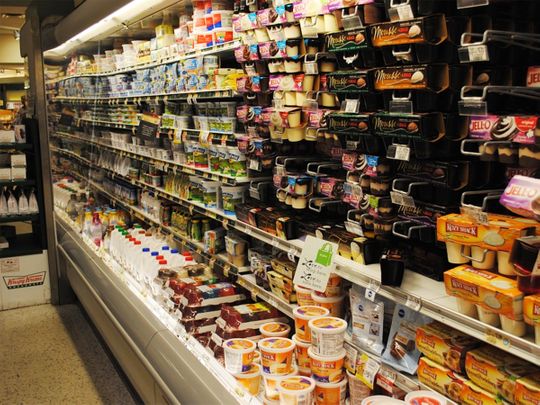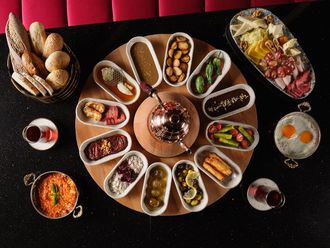
Grocery shopping can be very expensive if you don't know how to tackle it properly. Supermarkets are designed to get you to spend more money. So you have to prep, plan and stay focused.
12 money saving hacks
Check the price per unit
This is the best way to compare prices. Not all large packages or bulk items offer the best price. Checking what each unit costs, will give you a better idea on whether to buy the ones on sale or in bulk. The unit prices are located in the bottom left corner of the price tag.
Check the bottom shelves
That’s where all the generic items are usually placed. These generic versions, are cheaper than the famous big brands that we all know, and sometimes they taste the same. Well-known retailers are charging product makers premium to put their items at eye level, so they will cost more. Shelvers put the average and high cost items at eye level to boost sales.
Plan your shopping itinerary
Supermarkets and giant grocery stores have professionally designed inviting aisle patterns that entice you to buy things you aren’t planning on eating. The shopping path forces you to walk past products on non-essential aisles. Staple items such as meat, dairy products, breads, and household products are usually located in far corners or the opposite end of the entrance. Try to avoid the middle aisles as much as possible (that's where all the unhealthy and processed foods are stored). A helpful tip is to also plan out your entire week of meals before you go, including what you are expecting as leftovers and the nights you know you will dine out.
Tip: Why not tackle your week like this?
have a different main every day of the week. Pick one beef, one chicken, one fish, one meatless, a pasta meal, one whatever you want to double up on and have a take-out night! Then buy what’s needed for those meals. Doesn’t matter what night you cook each one, but you know that you will have the ingredients to make all those meals.
Stick to your habitual grocery list
After you've chosen the most cost effective groceries and planned your route to save time and money, the next time you go shopping, try to stick to the same list of items until you form a habit.
Ask the butcher for help
If you are the one responsible for cooking at home, whether for yourself or for the family, then you’ll know exactly what portion of fish, beef or chicken to buy in your house. Instead of buying repackaged premium cut meats, ask the butcher for cheaper cuts or larger cuts, that usually cost less than the ones displayed right out front.
Thaw your own seafood at home
The deli just marks up the price of already thawed meats, which are ready to cook straight away. These are actually the same items you find in the frozen food section. Save your money and buy frozen meats instead of room temperature.
Eat before you shop
Never ever do your grocery shopping before mealtime or when you feel hungry. Take our word for it.
Make sure your products are in good shape
Whenever you buy eggs, you should slightly twist all of the eggs in the carton if you know. That way if they’re cracked on the bottom, they’ll stick and you’ll know not to buy that particular box.
Always review your receipt for errors
You may not always notice this but blunders happen at the cashier section all the time. Keep an eye out when you pay for your groceries to make sure that no double punches are made while checking out and always review your receipt.
Scour for coupons
If you dedicate an hour a week on total looking through the newspaper pullouts for coupons, you will know what deals are available for the week. Couponing can save you thousands of Dirham over the year.
Want to buy organic?
Lastly if you really want to eat organic but can’t quite afford to buy EVERYTHING organic, keep in mind the foods that are highly pesticided/processed and are best to buy organic. These include:
- Berries
- Spinach/kale
- Grapes
- Apples
- Meat
- Eggs
Use a small trolley
Using a big trolley might make you feel like you have to fill up the entire thing. That’s how you end up buying unnecessary items. The smaller the cart, the better.
What are the most affordable groceries to buy:
1. Pulses
Nutritious, adaptable and wonderfully long-lasting, dried pulses. These include Pulses are the dried seeds of the legume plants. Hundreds of different varieties of pulses are grown around the globe. Pulses are very filling and can be used in almost all cuisines.
Beans (Black, red, kidney and white)
Lentils (orange, yellow, black, brown, red...)
Fava Beans
Chickpeas
2. Eggs
Eggs are incredibly versatile and can be added to almost any dish. Full of protein, good fats and low in sugar, eggs are healthy and delicious.
3. Canned tomatoes
Purchasing tomatoes fresh may not always be the most cost effective option. Instead you should opt for a box, or can of paste, crushed, or diced in a preserved form. This not only saves you time and money, but can add plenty of flavor to lots of dishes.
4. Potatoes
Potatoes! My favourite ingredient to cook with. They can be made in so many different way. Fried, boiled, mashed... They are also very nutrient-dense and really filling. They also happen to be very inexpensive and can last a long time when stored right enviornment.
5. Canned tuna
I normally don't like to encourage canned food or things that are too processed, but sometimes, you just have to take certain measures to cut down on your grocery bill. Tuna is a great source of protein that can be purchased inexpensively or in bulk.
6. Rice
Rice, whether white or brown, is a great, cheap food that can be used as a side dish for many many meals. It provides fiber, vitamins and minerals. Including brown rice in your diet is simple. It is quite easy to prepare and can be enjoyed with just about any meal. Rice can be expensive if you buy certain brands but try to stick to the local stuff.











